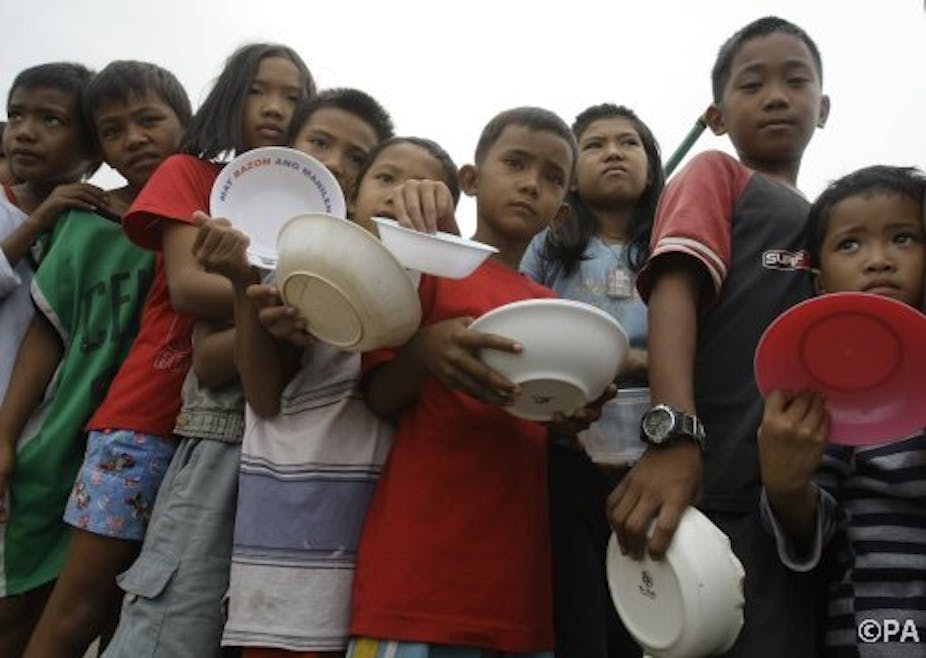Long before the advent of the internet, the Philippines was a prime destination for Western child sex tourists. The US military presence in the country during and following the Vietnam War fuelled a demand for prostitution that has grown today to massive proportions.
It was in this context that 17 British men and three Australians were arrested as part of an international police operation to disrupt a Philippines-based network that charged money to stream online video of children being sexually abused. Investigations in 14 countries have led to 29 arrests in the case overall, including 11 in the Philippines.
The investigation in the Philippines has focused on an impoverished village on Cebu island, which is a well-known hub for child prostitution of “alarming” proportions. It has been estimated that up to 80 households in the village are alleged to have been involved in the live streaming of child abuse.
NGOs report that tens of thousands of other children may be subject to similar abuse. Parents rent computers and UBS internet connections locally and then use internet chatrooms to find potential “clients” and negotiate a fee, which is then paid through international money transfers.
The online abuse of children has been characterised by Western law enforcement as an emerging threat to children. The involvement of parents has been reported with apparent shock. However, the live streaming of sexual abuse from the Philippines to the West is the online form of a pattern of sexual exploitation that has been occurring for decades – and which has its roots in the country’s long-standing economic problems.
The sex tourism economy
The poorest areas of the Philippines have the highest population growth; they face systemic undernourishment, poor education and health, and limited economic opportunities. Nearly 20% of the Filipino population lives below the poverty line despite the country’s macroeconomic growth.
Such dire conditions create a population of desperate parents who are widely taken advantage of by pimps, traffickers and abusive Westerners. In 2010, Unicef estimated that between 60,000 and 100,000 Filipino children have been victimised by prostitution rings. The production of child pornography in the Philippines occurs on an industrial scale, and is estimated to generate up to US$1 billion a year.
The Philippines’ lax enforcement of laws against prostitution and child abuse can be explained by the economic prominence of tourism, which is deeply intertwined with the sex trade. So bad is the Philippines’ reputation in this area that in 2011, the then-US ambassador Harry Thomas stated that “maybe up to 40%” of foreign men visiting the Philippines are sex tourists.
Meanwhile, as demonstrated by recovery efforts after the recent typhoon, corruption is still rife; prostitution and abuse are routinely overlooked, and attempts to prosecute foreigners for child sex abuse can be stymied by bribes.
Adding to these factors is the hugely increased regulation and punishment of child sexual abuse in Western countries since the 1980s, which has very likely helped drive the growth of child prostitution and pornography in the Philippines and South-East Asia in general. Therefore, fearing exposure in their own countries, Western sex offenders have long travelled to the Philippines in order to sexually abuse children with impunity.
Increased access to the internet in the Philippines has, it seems, made such travel redundant, since the sexual and economic vulnerability of Filipino children can now be exploited from afar. But the role of online technology in this abuse should not eclipse the core issues that render Filipino children vulnerable in the first place. Prostituted minors have reported that they entered the sex trade because there was too little to eat at home, and they had to find any employment possible to keep their families alive.
The online abuse of Filipino children by Western men cannot be disentangled from the terrible deprivation of the communities they grew up in, or the decades-long history of Westerners prostituting and sexually abusing Filipino children and women. The live streaming of sexual abuse from developing to developed countries is simply a new technological development in a long history of exploitation and inequality. Until that inequality is addressed, the highly profitable sexual abuse it fosters will continue to flourish.

